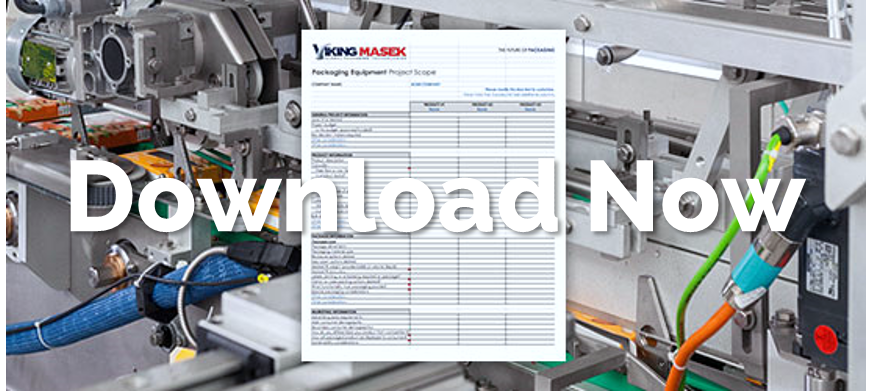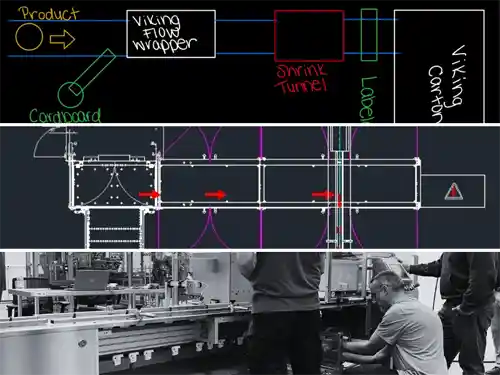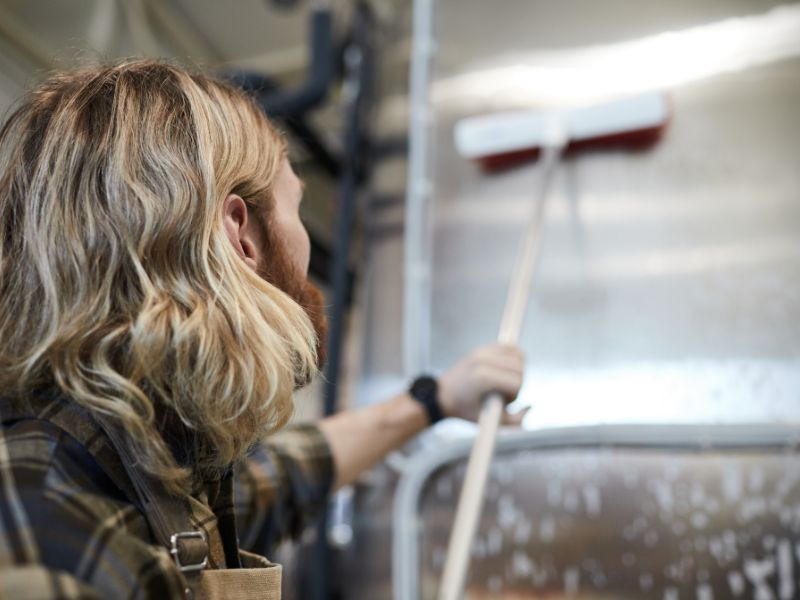5 Key Points to Define When Considering Packaging Equipment
 According to PMMI’s Vision 2025 report, Consumer Packaged Goods (CPG) companies report suffering from project “scope creep” as a result of poor planning at project onset.
According to PMMI’s Vision 2025 report, Consumer Packaged Goods (CPG) companies report suffering from project “scope creep” as a result of poor planning at project onset.
When shopping for new packaging equipment, defining your project scope can be daunting, especially if this is your first time at this particular rodeo. But have no fear, we can help! Here are 5 key details to define when considering packaging equipment, and tips for determining them.
1. Lead time
When do you need your machinery to actually be in commission at your facility and producing? Often original equipment manufacturers (OEMs) will define lead time as the span between down payment date and delivery date. This does not take into consideration installation, setup, and training time. Be sure to factor this in when you are given lead time so expectations remain realistic.
2. Key decision makers
Initially, we recommended assembling a cross-functional internal team to determine key parameters of your project. Request input from all departments that will be involved, including procurement, accounting, marketing, and machine operators, just to name a few. Hashing out sticking points early on can save valuable time and money spent re-defining the project scope later as new information comes to light.
After machine purchase, however, the packaging equipment manufacturer will likely ask you to narrow down the key decision makers to a single point of contact or very limited group. They will do the same and appoint a Project Manager or small team to oversee your project. This ensures efficient communication and creates accountability on both sides.
3. Product properties
Nothing can throw a wrench into a packaging equipment project like improperly defined product properties. Packaging equipment can be very nuanced. For instance, say you are packaging a granular product. Different iterations of this product can have different properties, with some creating dust and some not, and some requiring strict temperature and humidity control and some not so much. If the OEM is under the presumption that your product does not create dust or require environmental control when in fact it does, this can cause engineering issues down the line that can lead to increases in cost and lead time.
To eliminate this risk, many OEMs will strongly encourage product samples early on in the quoting process. This way, any future hurdles can be discovered before equipment is even ordered.
4. Packaging material type
Different packaging material types require different sealing mechanisms, temperatures, and equipment assemblies. Some packaging materials require little heat or contact time to seal and can melt straight through if the machine is not calibrated correctly. Some films are stretchy, which can cause integrity issues when the film is drawn through the machine.
Again, the best way to combat this is to send film samples to your packaging equipment manufacturer as early in the process as possible.
5. Equipment speed
How much output is required per day, shift, or hour to meet production goals? This will determine which type of packaging machine your OEM recommends. If your needs are high-volume, high-speed continuous motion packaging equipment or multiple systems may be necessary. But be forewarned: In general, the higher the speed required, the higher the cost.
 Packaging Equipment Project Worksheet
Packaging Equipment Project Worksheet
Overwhelmed with the myriad factors that you may face when embarking on a packaging equipment acquisition? Download our free Packaging Equipment Project Scope worksheet, which identifies 50+ points to define to ensure a successful and smooth project.




